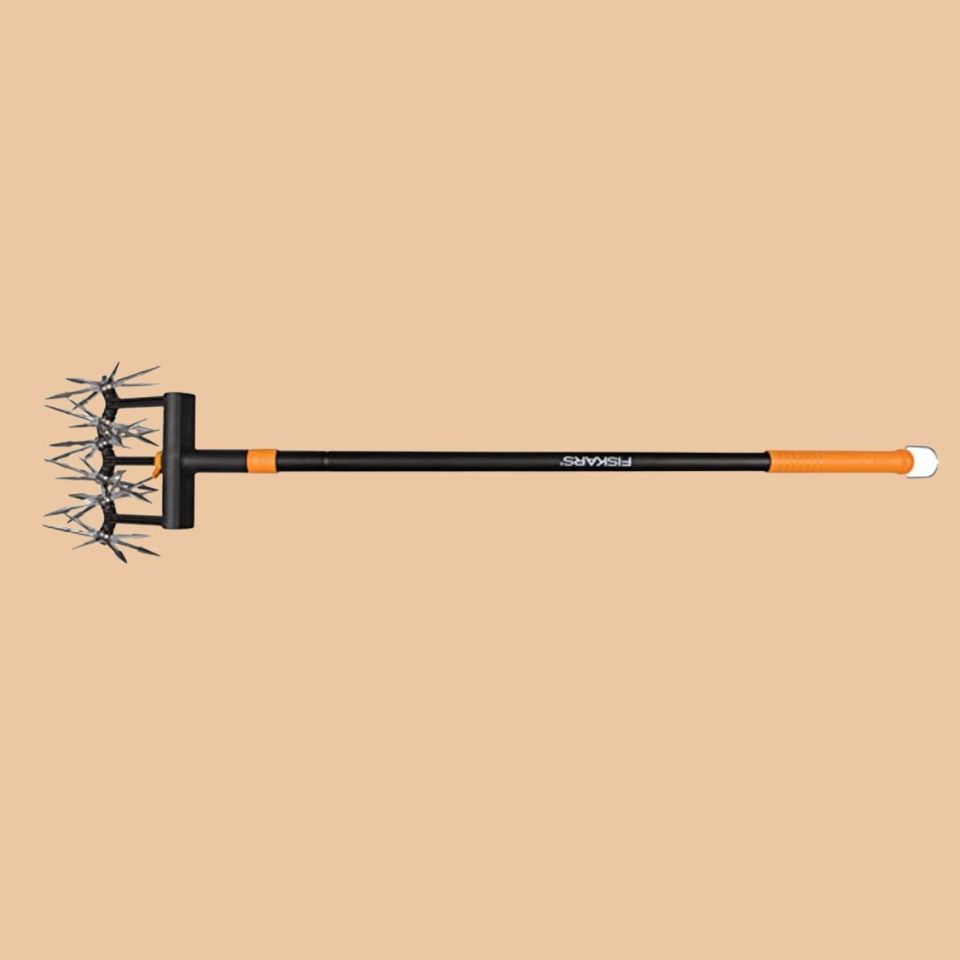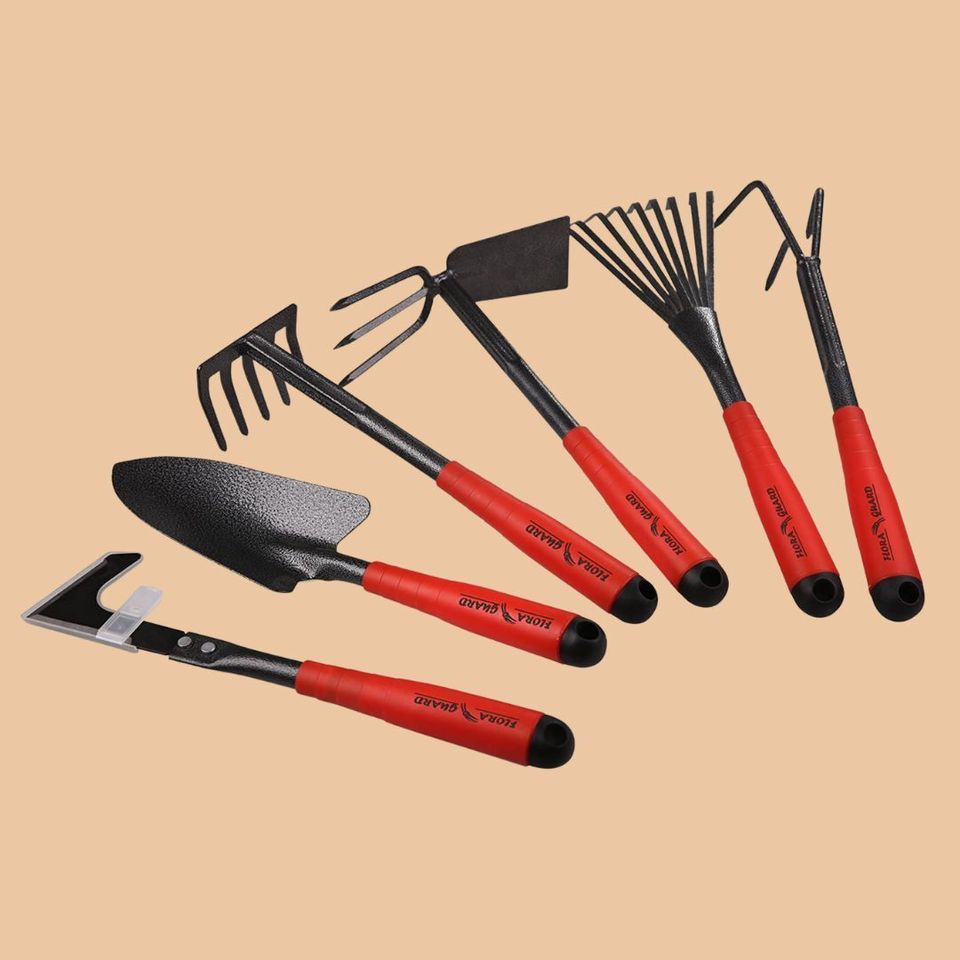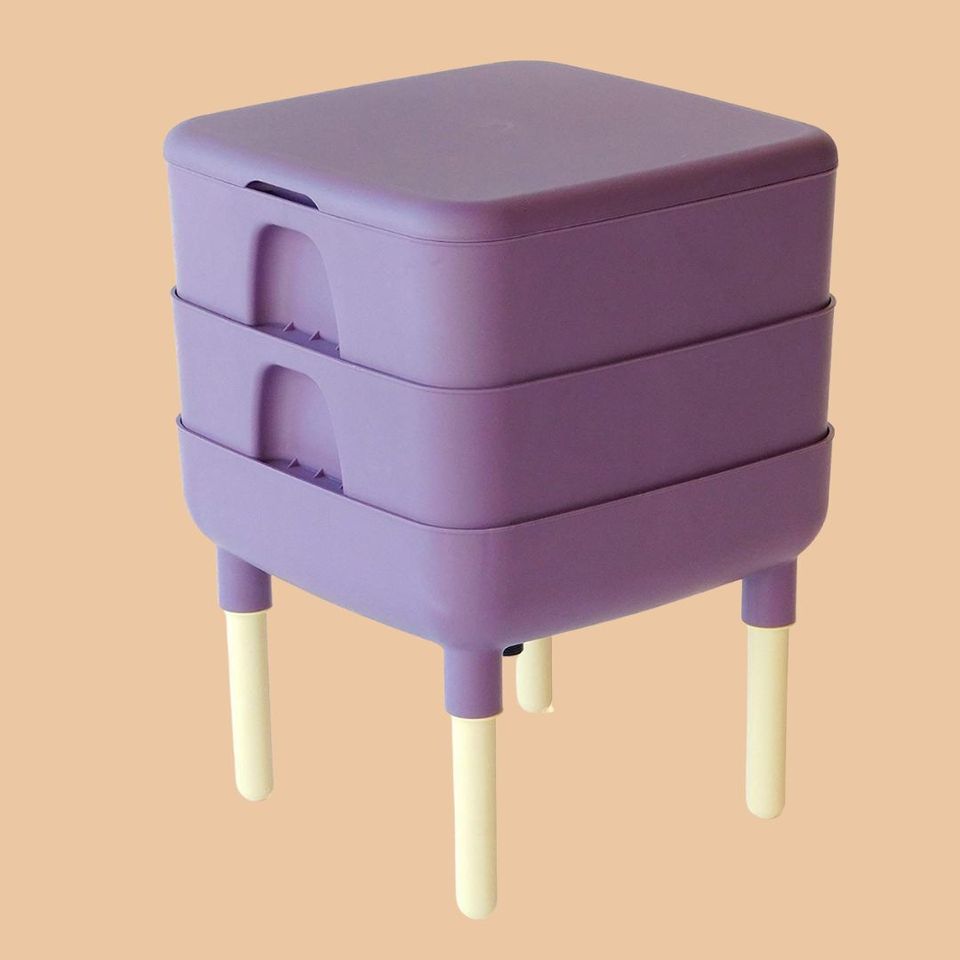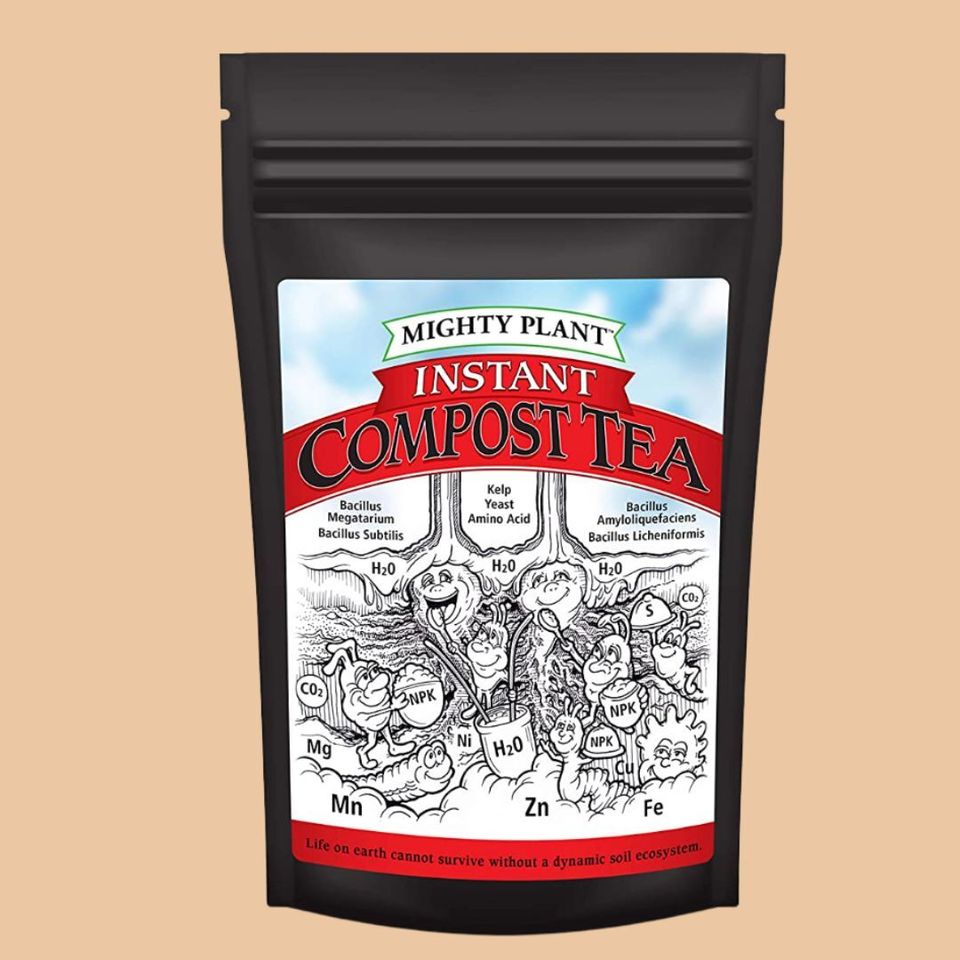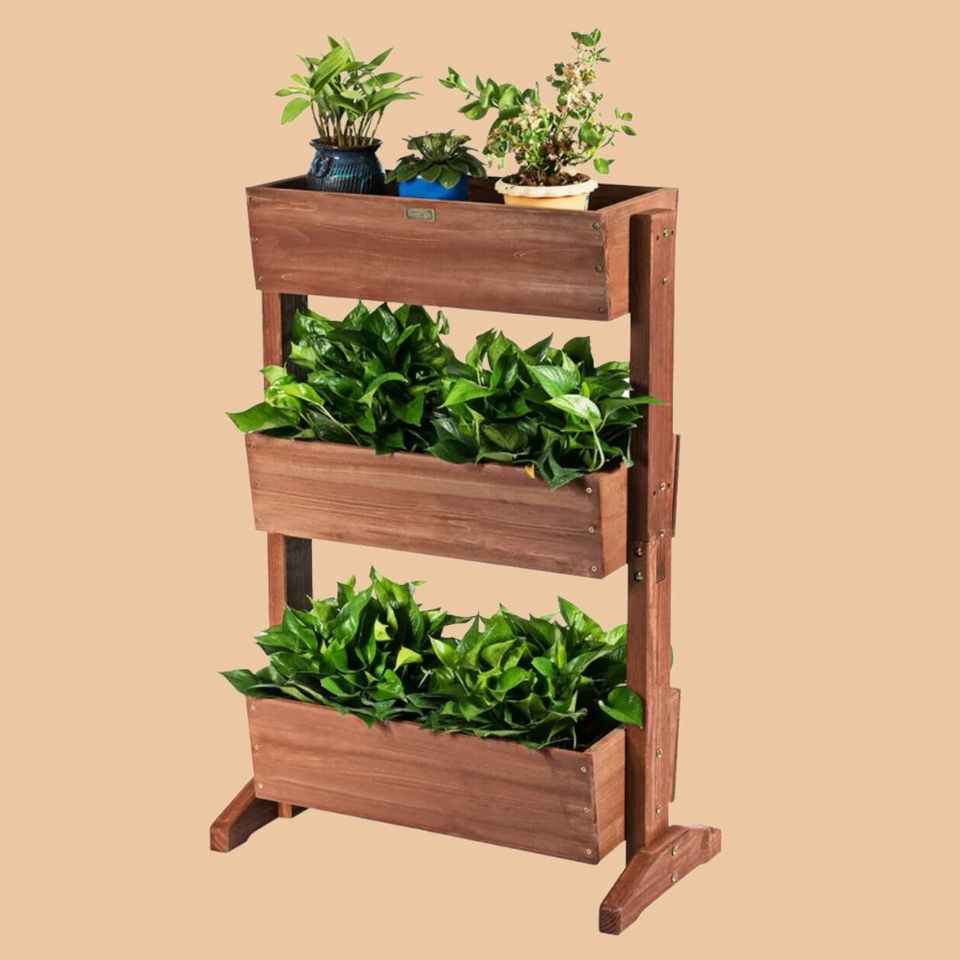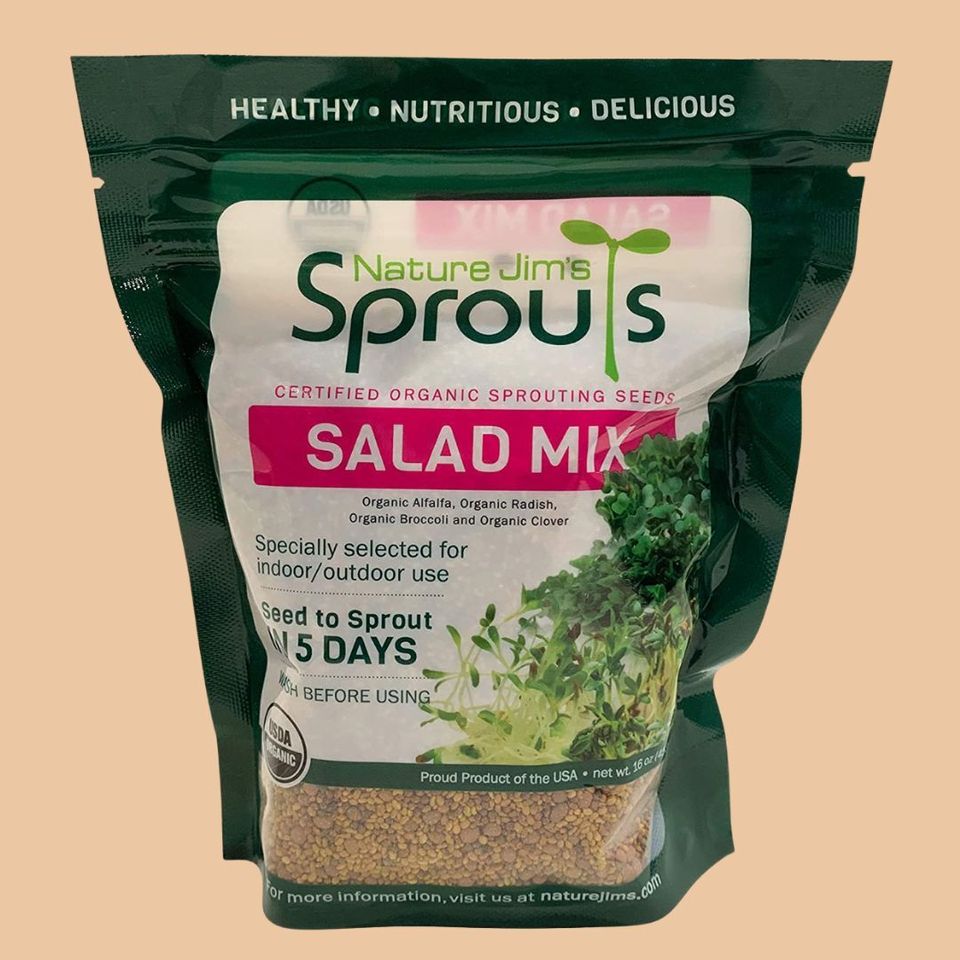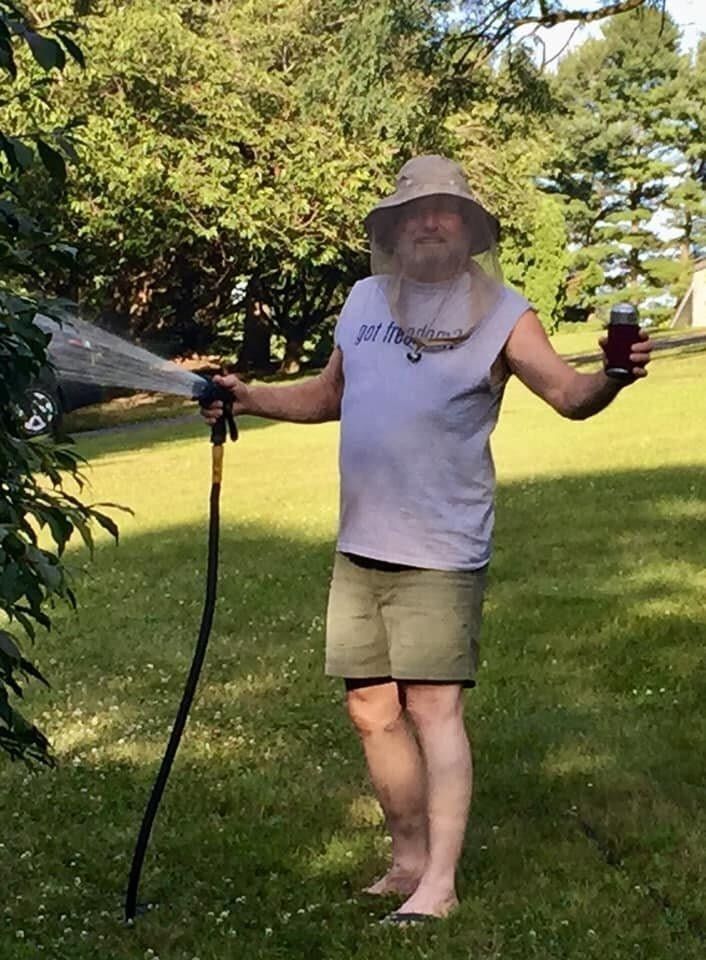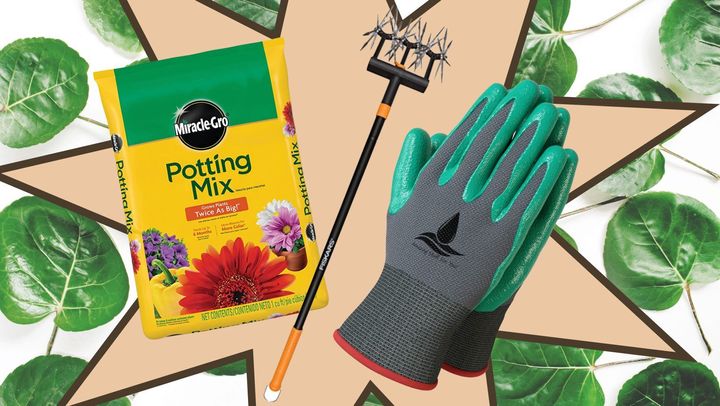
Amazon
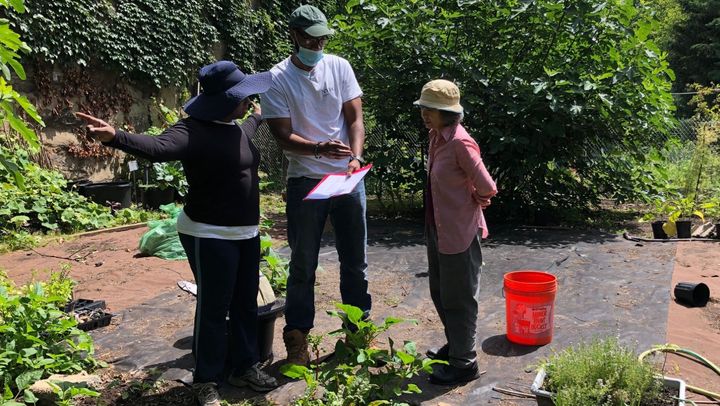
New York Botanical Gardens
1
A versatile potting soil for indoor or outdoor use
"Your soil is the most important material" when it comes to creating and maintaining a vegetative space, according to Cooper. Although your soil will definitely need some tending to, this highly-rated potting mix by Miracle-Gro can be a great place to start. Suitable for both indoor and outdoor planting, and for both flowers and vegetables, the key nutrients and aeration found in this mix provide ideal conditions for roots and feeds plants for up to six months.
2
A telescoping, hand-held soil cultivator
Cultivators are essential for loosening up the soil, removing weeds and increasing aeration prior to planting your seeds. This manual cultivator features a handle that adjusts in length and six rust-proof wheels that easily break into soil. The center wheel is removable to make cultivating around existing seedling beds easier.
3
A compact six-piece garden tool set
If you don't have space for a soil cultivator or your garden beds are not large enough to use one, Cooper said that a rake or a smaller hand cultivator, along with a small shovel or trowel, are some of the basics you should have before you start your garden.
This compact and hand-held set contains six different essential gardening tools at an affordable price. Each tool is fitted with a soft ergonomic handle and high-carbon steel heads that are resistant to rust.
This compact and hand-held set contains six different essential gardening tools at an affordable price. Each tool is fitted with a soft ergonomic handle and high-carbon steel heads that are resistant to rust.
Advertisement
4
Two pairs of breathable garden gloves in multiple sizes
Gloves are another basic on Cooper's list of gardening essentials, and these rubber-coated pairs are available in two different sizes. They have reinforced tips for added durability, and are made of a breathable fabric to make working for prolonged periods of time more comfortable.
5
A multi-chambered living composter for indoor or outdoor use
"Soils are complex and can take time and attention to maintain high fertility. Amending with compost, or even making your own compost, is super beneficial for your soil," Cooper said.
This three-chambered living composter contains two sections that house worms for composting as well as a reservoir base that collects nutrient-dense "compost tea," which is an excellent additive when watering house or garden plants. This durable and UV-resistant composter can tolerate direct sunlight for quicker composting, and features 52 angled migration tunnels for worms to transfer between bases.
This version does require vermicomposters (worms) to break down food scraps, and you can get those on Amazon, too, for $24.95. You will also need to layer worm bedding ($10.49 at Amazon) prior to adding the worms. Then you sprinkle them with water and gradually add food scraps until the contents have turned to mealy, soil-like fertilizer. You can also collect compost tea using the convenient spout at the base.
This three-chambered living composter contains two sections that house worms for composting as well as a reservoir base that collects nutrient-dense "compost tea," which is an excellent additive when watering house or garden plants. This durable and UV-resistant composter can tolerate direct sunlight for quicker composting, and features 52 angled migration tunnels for worms to transfer between bases.
This version does require vermicomposters (worms) to break down food scraps, and you can get those on Amazon, too, for $24.95. You will also need to layer worm bedding ($10.49 at Amazon) prior to adding the worms. Then you sprinkle them with water and gradually add food scraps until the contents have turned to mealy, soil-like fertilizer. You can also collect compost tea using the convenient spout at the base.
6
An instant compost soil additive
As Cooper noted, the health and complexity of your soil is one of the most essential components to growing a fertile garden, and adding compost can be a great way to achieve that. If you don't want to make your own compost, this no-brew instant compost tea can be a good alternative.
Just add water to activate the powerful biologicals created by worms, along with peptides, amino acids and yeast, to create bigger garden yields and increase root mass. One pound of this instant formula can create up to 160 gallons of compost tea.
Just add water to activate the powerful biologicals created by worms, along with peptides, amino acids and yeast, to create bigger garden yields and increase root mass. One pound of this instant formula can create up to 160 gallons of compost tea.
Advertisement
7
A stackable plant system with detachable pots
The possibilities are endless when it comes to containing your plants, as long as they have adequate pore space and drainage, as Cooper explained. This stackable plant system utilizes vertical space, but can also be detached and used in multiple combinations to accommodate your existing space.
The base of each pot has a soil separator to maintain air circulation for the roots, as well as drainage holes that allow excess water to trickle down to the plants below them. Altogether, the structure can hold up to 15 different plants and is resistant to cracks and fading so it can be used year after year.
The base of each pot has a soil separator to maintain air circulation for the roots, as well as drainage holes that allow excess water to trickle down to the plants below them. Altogether, the structure can hold up to 15 different plants and is resistant to cracks and fading so it can be used year after year.
8
A space-conscious vertical planter
Great for narrow patios or even nestled up against a kitchen window (placed on top of a large water-catching basin of some kind), this vertical planter measures 42 inches tall and 29 inches wide and contains three large-capacity removable plant beds that can be used independently. Constructed entirely of wood, each plant bed graduates in size from top to bottom, and contains drainage holes that can allow excess water to flow down to the plant bed beneath it.
9
An mixture of beginner-friendly herbs that can be grown indoors or out
Cooper told HuffPost that aside from houseplants, most herbs and lettuces generally do well indoors with adequate lighting, and as always, proper soil care. This culinary blend contains different 15 kinds of heirloom seeds for indoor or outdoor growing, such as cilantro, basil, chives and arugula. Each of these plants are meant to be easy to grow and the company provides access to a digital grow guide that can help you throughout the process.
Advertisement
10
A variety mix of micro-greens that can grow in low light
"Microgreens (young vegetable gardens) and sprouts are great for indoors because they are edible and [the] seeds can sprout in the dark as long as the soil is moist. They are also super nutritious," Cooper said.
This specially selected salad mix contains seeds that rapidly flourish into four different kinds of microgreens like organic alfalfa, radish and broccoli sprouts. You can also purchase a soil-free sprouting container if you don't want to grow the microgreens traditionally.
This specially selected salad mix contains seeds that rapidly flourish into four different kinds of microgreens like organic alfalfa, radish and broccoli sprouts. You can also purchase a soil-free sprouting container if you don't want to grow the microgreens traditionally.

